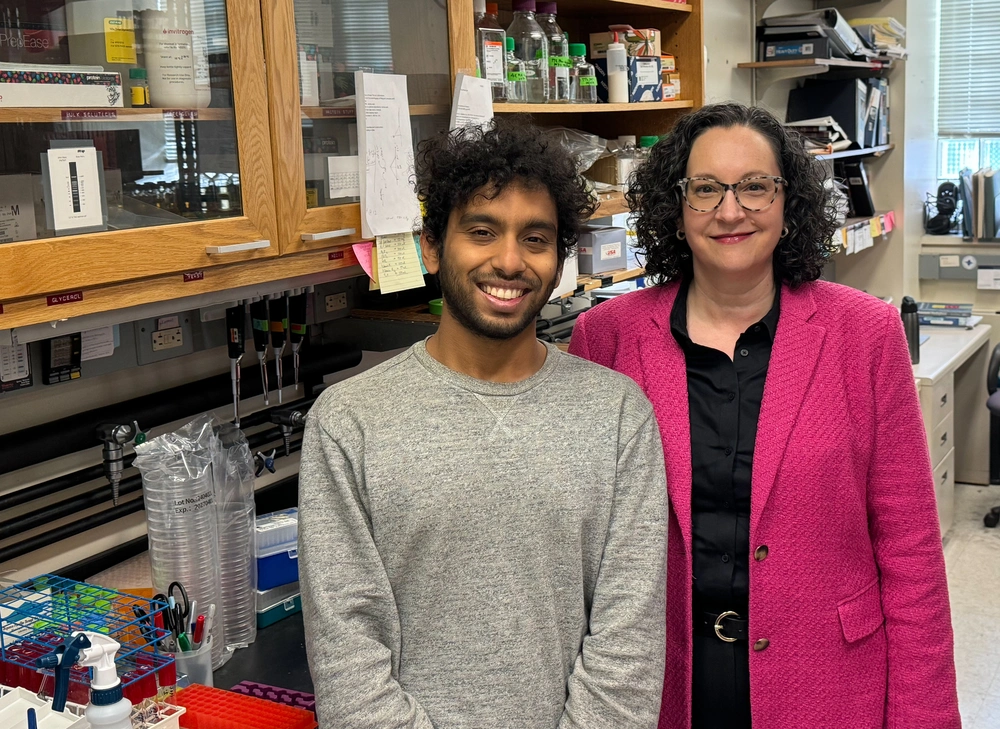
The human gut is a diverse and densely populated environment filled with bacteria and other microbes in fierce competition for resources. One major colonizer in the human colon is Bacteroides, a genus of bacteria that can break down a wide variety of complex carbohydrates indigestible by humans.
Researchers from the lab of Cari Vanderpool examined these organisms to evaluate their utilization of smaller carbohydrates like raffinose family oligosaccharides, or RFOs. Their findings, reported in the Journal of Bacteriology, shed light on the ability of certain gene clusters within Bacteroides genomes to perform multiple functions, including RFO breakdown, and reveal a duplication in the examined genome.
RFOs are highly soluble carbohydrates found in the seeds of many crops such as beans and lentils. Indigestible by humans, they are broken down in the colon by a variety of gut microbes. Vanderpool’s lab wanted to understand how different types of bacteria in the gut microbiome utilize these indigestible byproducts and examine their role in human health.
Investigators were particularly interested in identifying the Bacteroides genes involved in breaking down RFOs. They looked to polysaccharide utilization loci (PUL), large gene clusters that are normally responsible for breaking down carbohydrates much larger and more complex than RFOs.
“Other types of bacteria have small operons that contain all the genes necessary for a microbe to eat a specific substrate, but we couldn’t find anything like those gene clusters in Bacteroides,” said Anubhav Basu, a graduate student and first author of the paper. “Instead, we found genes located in multiple PULs that are responsible for RFO breakdown. This is surprising because a PUL’s main job is to degrade carbohydrates that are much larger and more complex than RFOs. But through a process called moonlighting, these genes that normally are assigned another job can serve a separate function.”
The investigators were also surprised to find that RFO use in some Bacteroides is stimulated by a gene duplication within one of the PULs. Bacterial strains containing the duplicated gene grew much better on the RFO substrate than strains with only one copy of the gene. How and why this gene duplication occurs is still not understood, but it may allow Bacteroides to compete for RFOs more efficiently in the gut.
One implication of this research pertains to the potential use of RFOs as prebiotics, or molecules used to grow desirable bacteria in the gut. Unlike probiotics, which are live microorganisms added to the microbiome, prebiotics function as food to enhance the growth of existing bacteria. Most prebiotics currently being studied are medium or long-chain compounds such as inulin or pectin. But initial testing from other labs has highlighted RFOs’ ability to enrich some good bacteria.
But using prebiotics to promote a “healthy” microbiome isn’t an exact science. The current strategy has developed from interpretations of highly complicated population-level microbiome studies and inferences about which bacteria are beneficial. Complicating the utility of this strategy is the vast difference among individual human microbiomes, even across similarly healthy individuals. Knowing what makes an individual’s microbiome optimal is challenging.
“I see a lot of things on social media about the gut microbiome,” said Vanderpool, a Professor of Microbiology. “A lot of claims about what scientists purportedly know are at best very exaggerated, and at worst totally wrong.”
Researchers don’t fully understand what makes probiotics helpful for some individuals and neutral or even detrimental for others.
“That’s why this research is so important,” Vanderpool said. “People have cherry picked microbiome studies and over interpreted the results to make claims that certain probiotics are better than others. But it’s much more complicated than that. There’s so much we don’t know.”
Now that researchers have a better understanding of RFO utilization, their next step is determining how and whether Bacteroides deploys these mechanisms of RFO use when grown in competition with other bacteria.
“We still have more questions than answers, so testing these in vitro findings in vivo will be important,” Basu said.
